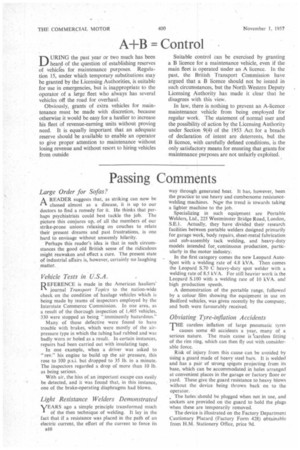A±B = Control
Page 44

If you've noticed an error in this article please click here to report it so we can fix it.
URING the past year or two much has been heard of the question of establishing reserves of vehicles for maintenance purposes. Regulation 15, under which temporary substitutions may be granted by the Licensing Authorities, is suitable for use in emergencies, but is inappropriate to the operator of a large fleet who always has several vehicles off the road for overhaul.
Obviously, grants of extra vehicles for maintenance must be made with discretion, because otherwise it would be easy for a haulier to increase his fleet of revenue-earning units without proving need. It is equally important that an adequate reserve should be available to enable an operator to give proper attention to maintenance without losing revenue and without resort to hiring vehicles from outside Suitable control can be exercised by granting a B licence for a maintenance vehicle, even if the main fleet is operated under an A licence. In the past, the British Transport Commission have argued that a B licence should not be issued in such circumstances, but the North .Western Deputy Licensing Authority has made it clear that he disagrees with this view.
In law, there is nothing to prevent an A-licence maintenance vehicle from being employed for regular work. The statement of normal user and the possibility of action by the Licensing Authority under Section 9(4) of the 1953 Act for a breach of declaration of intent are deterrents, but the B licence, with carefully defined conditions, is the only satisfactory means for ensuring that grants for maintenance purposes are not unfairly exploited.
























































































































